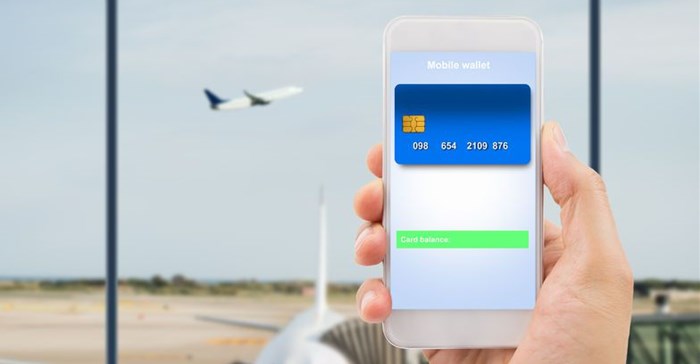Mobile payments give you wings

Consumers want options
In the tourism industry, mobile payment technologies have forced both direct travel suppliers, such as the airlines, and intermediaries, such as corporate travel agencies, to review the scope of the offering as the battle for business in this highly competitive sector continues to intensify.
Access to smartphones underpins transacting where consumers enable their devices to connect wirelessly to payment readers. In 2012, 17% of online payments were made through mobile wallets and, by the end of this year, this should rise to 41%.
This means appealing to corporate or private travellers by delivering a variety of best-of-breed solutions to meet client needs, whether in terms of costs, security or efficiencies.
Rise of the virtual card
One growing trend in corporate travel payments is the virtual card. Though less common in South Africa than in the US or Europe, virtual cards have become popular as an alternative to credit cards, usually for staff members who travel either infrequent or on contract and as such wouldn’t warrant access to a corporate credit card.
A Carson Wagonlit Travel survey shows that introducing virtual payments to their payments strategy is a high priority for 32% of travel managers. Aside from streamlining administration, many travel managers use virtual credit cards today because they address their need to control the payment process.
Virtual cards can reduce some of the risk and offset the potential inefficiencies associated with regular corporate travel. Since no physical card is presented to the merchant, the likelihood of the virtual card being cloned or stolen is reduced, but only if the physical card is always protected against fraud. One concern with the use of the virtual cards is the tightening of merchant fraud parameters, which includes card-acquiring banks clamping down on the processing of transactions where a physical card is not present.
Another payment trend that might interest travel management companies is tokenisation. Traditionally, when a card or mobile payment is made, the card number passes through various virtual touchpoints to be authorised. Tokenisation counters this as the original number is stored in a secure ‘token vault’, and replaced with a unique token number that a fraudulent user would struggle to link to anything else along the chain even if they manage to intercept the token number. This technology will vastly reduce the corporate card issuer’s write-offs due to fraud, and will enhance operational efficiencies as less time spent liaising with the recon department regarding cancelled or unauthorised transactions.
Out with the new, in with the old
One might consider Bluetooth a dated technology, but in terms of using the technology for making payments, it is still a great option. Bluetooth has certain advantages over other technologies, such as a much longer range than NFC technology. Bluetooth class 4 devices can reach up to 50 metres compared to NFC's requirement for the two devices to be within centimetres of each other. Added to this, for the corporate executive that needs every second at his or her disposal, Bluetooth creates a truly hands-free experience since transactors do not have to take out their devices and tap them to a reader. Finally, for the time-conscious, payment processing is always faster through Bluetooth than through NFC technology.
When catering for corporate travellers there is no shortage of variety, but the different payment technologies also need to be measured in terms of efficiency, costs and processing times.

















